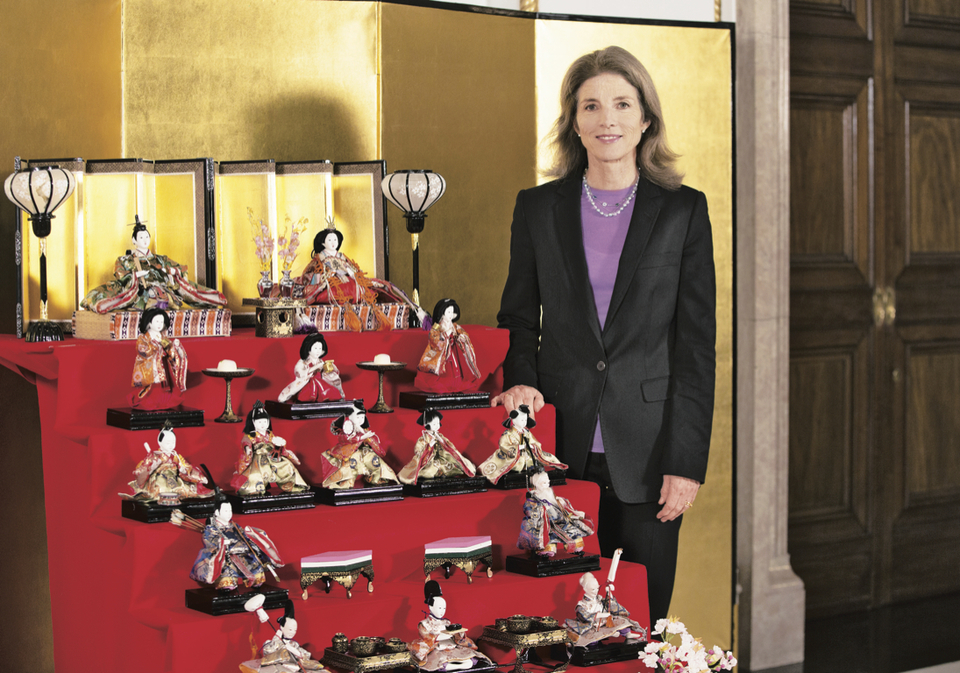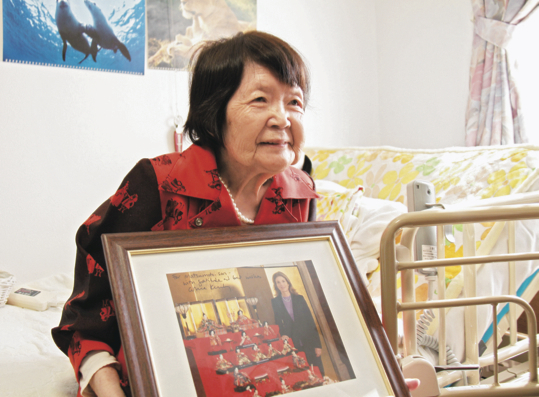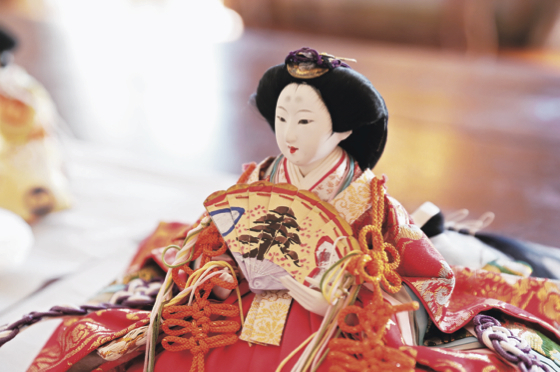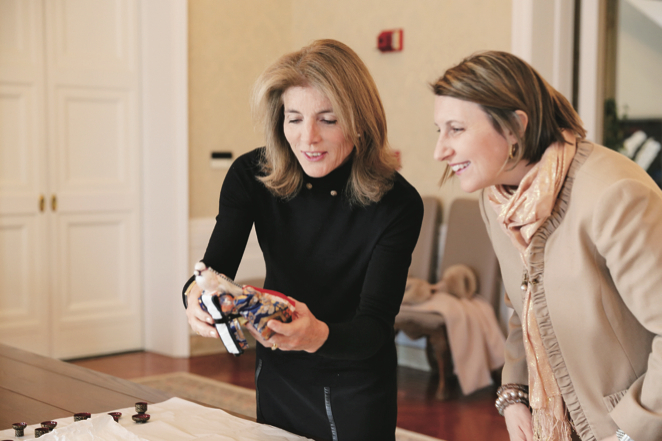Fifty-three years ago a Japanese woman living in Kitami, a city in Hokkaido, Japan, wrote a letter to the president of the United States, John F. Kennedy, congratulating him on becoming the president. As they were about the same age, she felt an affinity for him. Not long after, she received a thank you letter from the President Kennedy. Moved by the unexpected letter, she sent the president a set of traditional Japanese hina dolls to express her gratitude.
Hina dolls are dolls that Japanese people display in their homes for Hinamatsuri (Doll Festival), a traditional Japanese festival celebrated on March 3 to pray for the health, safety, and growth of their daughters. The festival itself dates back to the twelfth century, and by the seventeenth century the dolls became part of aristocratic women’s dowries.
Half a century later, Kennedy’s oldest daughter Caroline began her service as U.S. ambassador to Japan. In preparation for the Hinamatsuri in March 2015, the ambassador sent for the hina dolls, which were being stored at the United States National Archives and Records Administration, and displayed them at the ambassador’s official residence. At the same time she asked for an extensive search to be carried out to find “Matsumoto-san from Kitami,” the woman who sent the dolls. In February, she was finally tracked down.
Matsumoto-san from Kitami, whose full name is Tsuyako Matsumoto, is now ninety-two years old and living in a nursing home in Kitami. “I never thought I would receive a reply from the president. It made me really happy,” Matsumoto says, looking back. She was so moved by the letter that she bought a set of hina dolls with the money she earned from her part-time job and sent it to the White House. “It was a pretty expensive and hard-to-find set, so I thought it would surprise him.”
President Kennedy gave Matsumoto’s dolls to his beloved daughter Caroline when she was four years old. “When I was a little girl many people from the world sent me dolls from their home country. But these were among the most special because they were so beautiful.” The hina doll set she was given is a complete seven-platform set of fifteen dolls including sanninkanjo (three court ladies) and gonin-bayashi (five musicians). “What a wonderful country Japan must be,” she recalls thinking as a young child.
In February 2015, Matsumoto received a thank you letter and video message from Ambassador Kennedy through the United States Consulate General in Sapporo. The letter read, “I am so happy to be able to bring the hina dolls back home to Japan and display them at the ambassador’s residence as a symbol of friendship between the United States and Japan.” In the video, the ambassador said, “I would like to thank her for sending these beautiful dolls all the way to the United States such a long time ago. It really shows me that when we send gifts out into the world, you never really know whose lives you are going to touch and change.”
“It moved me beyond words,” said Matsumoto when she saw the video, wiping tears from her eyes. “Thank you so much for treasuring the dolls.” Now back home in Japan, Matsumoto’s beautiful dolls were displayed at the ambassador’s official residence for Hinamatsuri on March 3.
Tsuyako Matsumoto holding a photograph from Ambassador Kennedy. When Matsumoto saw the photo she was at a loss for words, “You treasured them so much...” she said.
Tsuyako Matsumoto holding a photograph from Ambassador Kennedy. When Matsumoto saw the photo she was at a loss for words, “You treasured them so much...” she said.
Hina dolls’costumes emula te the at t ire worn by the nobility of the imperial court (the photograph is of the empress doll ) .


































































































































